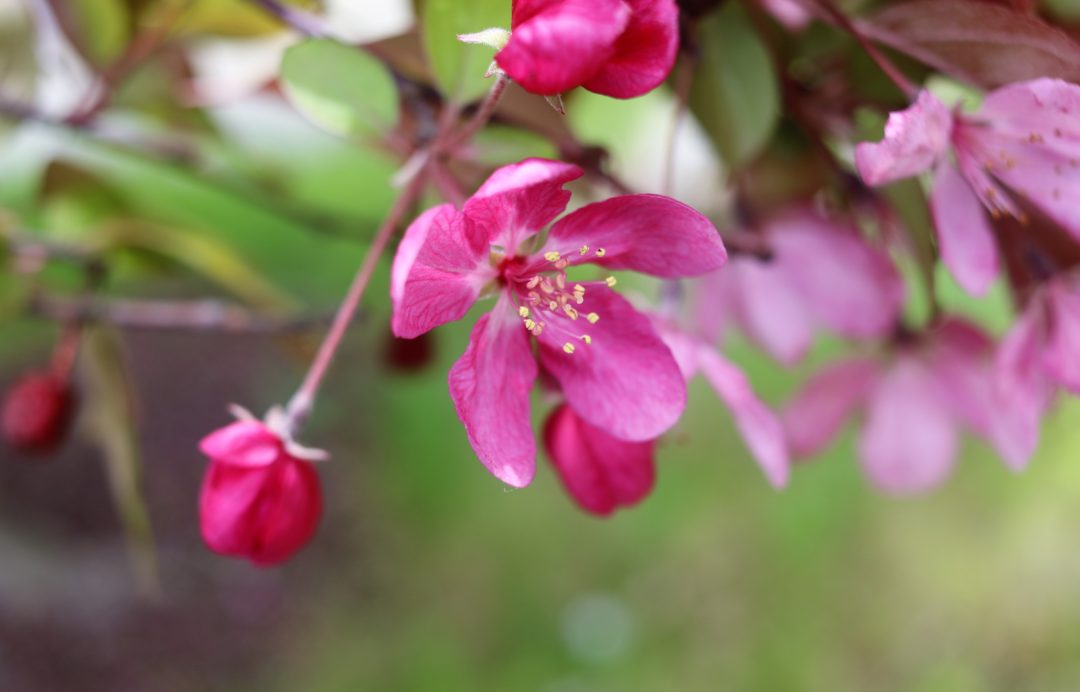We all know that the key to long hair is length retention, and the key to length retention is healthy hair. One of the best indicators or how healthy your hair is how healthy your ends are. Severely split ends can be a sign of neglect, lack of moisture and/or protein, or over manipulation.
While the above is true, these are not the only reasons that you may be finding it difficult to manage your split ends. If your hair is fine, high porosity, kinky type 4 hair like mine, split ends are something that you are always combating. My curl pattern (Type 4 coils and curls), texture (kinky), thickness (fine), and porosity (high) makes my beautiful strands a split end haven. I have lots of mainstay products, routines, and techniques that help me to keep my split ends at bay, but I’ve never been able to completely rid myself of them.
I remember being amazed at those ladies that spoke of how they never clipped their ends, or how they would clip them once a year. How could this be when I sat with a head full of split ends just a couple weeks after clipping them!? I realized that my routine wasn’t up to par and immediately began to actually learn my hair and what it needed to strive. After perfecting my routine years later… I still had split ends galore. I couldn’t figure it out! How was my hair at its most moisturize, at its healthiest state, and I was still finding split ends every month?
I realized that it was simply the nature of my hair and that I would have to tackle these split ends from a different angle.

Clipping my ends the traditional way simply wasn’t working. I was losing a lot of length without ever truly achieving liberty from split ends. I realized that my hair type, texture, thickness, and porosity were not just causing me to be more prone to split ends, but it wasn’t only my “ends” that were splitting! I was finding splits all along my hair shaft.
It all made sense now!
The reason I was constantly finding split “ends” even after a trim… even after truly solidifying my protein/moisture balance… was because it wasn’t just my ends that were splitting. I could cut 3 inches off the bottom of my mane, but if I had splits at inch 4 then I would still find split ends.
That is when I read a blog post by the one and only OG Curly Nikki. She wrote about how she had been using a method called Search and Destroy to target her split ends, single strand knots, and overall damaged hair. It entailed going through her mane, strand by strand, and assessing for split ends. She would then cut any split ends that she would find no matter where they were on the hair shaft and seal with butter.
EUREKA!
There it was! The method that I needed to actually keep my split ends controlled! I immediately began using this method and I never turned back. The Search and Destroy method was exactly what I needed to help me get rid of any damage that I may find and retain as much length as possible. I love it.
The Pros
1.Effective
The Search and Destroy method is one of the only split end clipping methods that actually allows me to clip all of my splits ends and damaged hair. It also forces me to actually look at my strands up close and assess what its needs may be.
2.You Retain More Length
If we re trying to retain length, why are we cutting off perfectly healthy hair? This is a question that I had to come to grips with when I realized that my traditional way of clipping my split ends wasn’t actually getting rid of my split ends. This Search and Destroy method allowed me to stop doing this by allowing me to find and clip only the damaged hair, leaving the rest of my long, lustrous strands in tact.
Now, while this method has been serving my main concern of getting rid of any and all damage, and retaining as much length it wasn’t without it’s faults.
The Cons
1.Time Consuming
This method of split end clipping is tedious…
IT TAKES FOREVER if you are trying to be thorough. I have found that the best way to deal with this is by doing a little bit all the time. I take it upon myself to Search and Destroy every wash day and whenever I find myself kind of bored and needing something semi mindless to do. I take about 15-30 minutes (or more if I have the time) here and there to find any split ends, single stand knots, and damaged hair and snip those suckers! Because I’m kind of always Search and Destroying, I don’t feel like I need to have a marathon session for hours and hours to find every single split end.

2.Uneven Hair
Now, I’ll admit, this hasn’t been much of an issue for me as I wear my hair in an afro/natural state 99% if the time. That doesn’t change the fact that technically my hair is more uneven than someone who uses more tradition split in cutting methods. If you like blunt ends and for your hair to be all one length, or you wear your hair straight more often then this may be a serious con for you. However, if you are like me and tend to wear your hair in more twist outs, braid outs, blow outs, and wash n’ go’s then this is something you may not even notice.
Conclusion
The Search and Destroy method changed my hair forever (Thanks Nik!)Something else that I like to do to stay on top of my split ends is to do an annual “dusting” of my ends (Nikki speaks of doing this too). This means that I simply cut about a quarter to half an inch off of my entire mane to catch whatever split end or fairy knots that I may have missed. Because our ends are the oldest part of our hair, they tend to be the most damaged and weathered from wear and tear. So this general trim just helps to remove what is most likely the most damaged hair. This is not enough to keep my hair at its healthiest, but it is a nice overall chop.
Is the Search and Destroy method tedious and time consuming? It can be. But is it a major key to how I’ve been able to retain long, healthy hair? YES!
Have you tried the Search and Destroy method? What are your thoughts?




